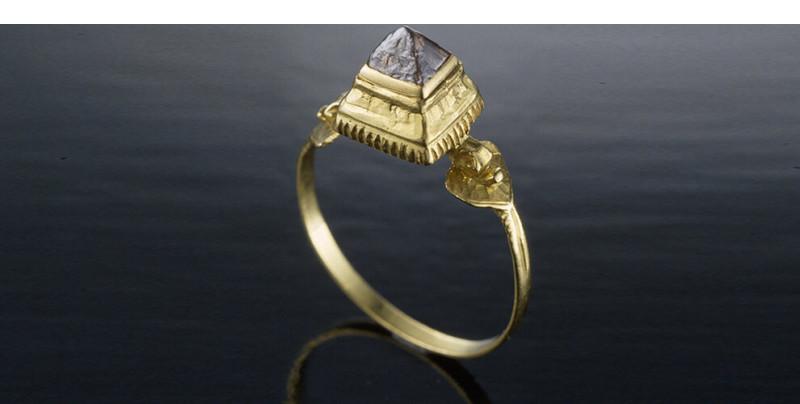
Fede's wedding ring - history and symbolism
The two hands holding a contract are probably the oldest symbols associated with marriage. We are indebted to these Romans and their tendency to describe everything in legal formulas. And they did it so well that we now use the solutions introduced by Roman jurists into civil law. There were two types of fede rings: solid metal and metal with a bas-relief framed in precious stone. If the sculpture is convex, then it is a cameo, and if the faceted stone is concave, then it is an intaglio. As for the metal, it is gold, rarely silver. The information that the Romans gave each other wedding rings made of iron is unlikely, if only because iron is used to make fetters, and it is difficult to suspect the Romans of such an unambiguous message on the wedding day.
Gold ring with cameo engraved on agate. Rome, XNUMXth-XNUMXth century AD
Roman-British fede ring, cameo of sardonyx, XNUMXrd-XNUMXth centuries.
Fede - ring with clenched hands
Clear and distinct symbolism meant that after the fall of Rome, the fede passed into the possession of medieval Europe, because the folded hands fit perfectly into the symbolism of the church, there was no need to change anything. Below is an Italian silver wedding ring from the turn of the XNUMXth and XNUMXth centuries. The magic power of the ring is enhanced - under it, two more hands firmly hold the heart.
In the next ring, the jeweler, perhaps under the influence of the customer, also used all the hands available in the relationship, speaking a little differently. Hands clenched in pairs and still holding together what could very well be a folded document or a bone of contention? The ring was probably created by joining two rings, and the hands are holding the hearts so that only the top protrudes.
Silver feda from the turn of the XNUMXth and XNUMXth centuries, Europe.
The fede ring was popular until the end of the XNUMXth century and even at the beginning of the XNUMXth century. I think it might seem too sentimental at the moment, but maybe it's worth revisiting?
Fede from the end of the nineteenth century, which has come full circle in history. Gold, silver, Persian turquoise and diamonds.
Leave a Reply